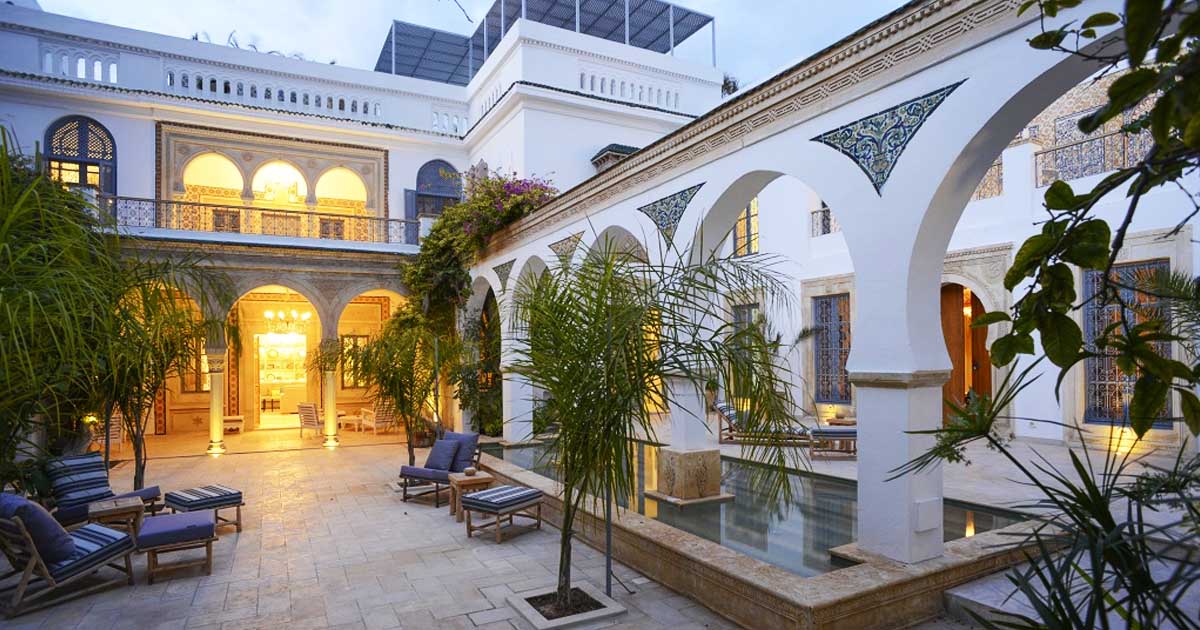
A maison d’hôte is more than just a place to sleep. It’s a home away from home, usually a restored traditional house, riad, or villa owned and managed by locals. These guesthouses offer:
Personalized hospitality
Home-cooked meals made from local ingredients
Authentic architecture and decor
Insights into local customs and daily life
They’re ideal for travelers seeking cultural immersion, tranquility, and unique encounters beyond the tourist trail.
Many maisons d’hôtes are housed in beautifully restored buildings that date back centuries, showcasing traditional Tunisian craftsmanship — from intricate tilework (zellige) and arched doorways to lush inner courtyards and rooftop terraces.
Guests often share meals with the owners, hear family stories, or participate in local traditions. The experience feels more like visiting distant relatives than staying at a hotel.
Wandering the narrow alleys of Tunis’s historic medina, you’ll find hidden gems like:
Dar Ben-Gacem: A beautifully restored 18th-century palace with a focus on social and cultural engagement.
Dar El Médina: Nestled in the heart of the UNESCO-listed medina, this guesthouse offers an artistic and peaceful retreat.
Cap Bon is known for its beaches, Roman ruins, and lush countryside. Look for:
Dar El Gaïa in Korbous: Overlooking the Gulf of Tunis with natural hot springs.
Dar Warda in Nabeul: A charming mix of Berber and Arabic influences.
For a Saharan adventure or island serenity:
Dar Dhiafa in Djerba: A beautifully restored group of ancient homes in Erriadh, full of Djerbian architecture.
Dar Seddik in Tozeur: Offers access to palm groves, the desert, and traditional oases.
Kef and Testour are less visited, yet stunning.
Dar Boumakhlouf in Le Kef: An Ottoman-era mansion with sweeping views.
Dar Chennoufi in the Northwest: A farmhouse-turned-guesthouse offering eco-tourism and local cuisine.
You’ll witness the true face of Tunisia — not just the one crafted for tourists.
Meals are usually homemade: think couscous royal, brik, lablabi, and seasonal fresh fruits.
Many guesthouses focus on eco-tourism, use local materials, and support nearby artisans.
Compared to luxury hotels, most maisons d’hôtes are reasonably priced, making them ideal for families or long stays.
Book in advance: Especially during high season (spring and fall).
Ask about meals: Many offer breakfast and optional dinner — and you don’t want to miss those!
Embrace the slow pace: Part of the magic is in slowing down and connecting.
Respect traditions: Especially in rural areas, modest clothing and polite behavior are appreciated.
Choosing a maison d’hôte in Tunisia is choosing a travel experience that blends comfort, culture, and connection. Whether you’re sipping mint tea on a rooftop in Sidi Bou Said, exploring Berber villages in the south, or listening to local music in the courtyard of a medina home, you’ll leave with more than just photos — you’ll leave with memories and friendships that last a lifetime.